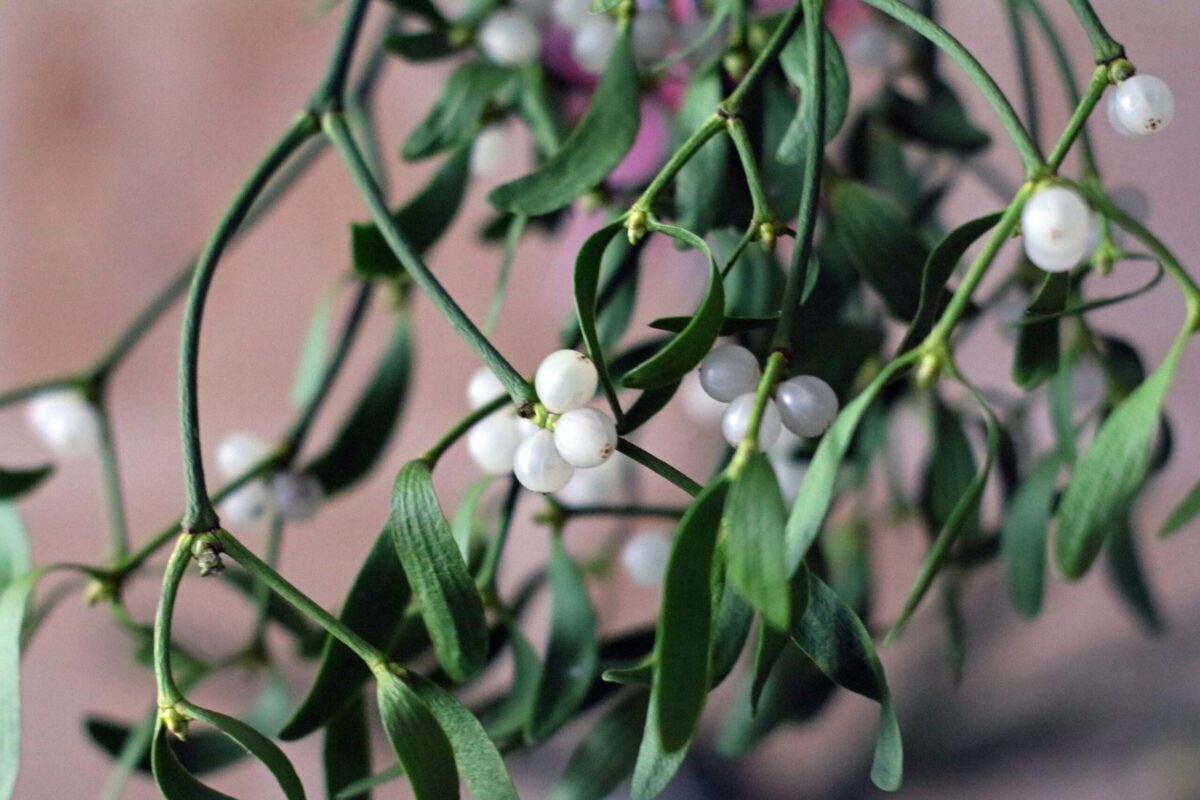Actress and now health-activist Suzanne Somers made headlines several years ago when she shared the treatments she took advantage of in her fight against breast cancer. After being told she would likely die without chemotherapy, she opted instead for a more natural treatment – mistletoe injections. Her story was shared on news media everywhere, including the New York Post and the Dr. Oz Show.
If you’ve read my book, I Used to Have Cancer, then you know that one of the things I did to rebuild my immune system was to use Iscador, an extract of mistletoe. I first learned about this treatment, a popular natural cancer treatment remedy in Europe, in my early days in my fight against cancer. I was fortunate to find a local M.D. who was trained in Rudolph Steiner philosophy (Steiner, founder of anthroposophy, introduced mistletoe extract as a cancer treatment in 1920).
Iscador samples were ordered from Germany, and I was instructed on how to self-administer injections in the area around my spleen (not directly into the spleen). I continued this once-a-day regimen for an entire year. After the initial flu-like symptoms I experienced (a result of intense stimulation of my immune system), I began to feel stronger and stronger as the year went on.
The increase in energy was a very welcome experience in the midst of my battle with cancer.
As anyone who has gone through chemotherapy, radiation or other mainstream cancer treatments knows, they often leave you zapped of your strength. The good news is that an increase in energy is a common characteristic of mistletoe extract therapy. An article published in Johns Hopkins magazine detailing the progress of cancer patient/survivor, Ivelisse Page, reports that her oncologist said, “That’s a universal feature I’ve seen in all patients who get mistletoe. Their [color] improves; they have more energy.” (J. Sugarman, Are Mistletoe Extract Injections the Next Big Thing in Cancer Therapy?)
Even when used alongside traditional cancer treatments, mistletoe therapy offers something that chemotherapy alone cannot — a treatment option that makes patients feel better, rather than sicker.
What Is Mistletoe Extract?
Mistletoe is a semi-parasitic plant that grows on host trees. According to iscador.com, there are over 1,000 mistletoe species worldwide. The carefully nurtured plants used in medicinal preparations typically grow in Germany, France, and Switzerland. The trees on which mistletoe grows are of utmost importance, which makes sense when you realize mistletoe is a parasitic plant.
Oak and elm trees are typically regarded as the most valuable hosts. Because the abundance of oak mistletoe is quite limited, a program was initiated to protect the stocks of oak mistletoe. You can learn more about that on this website.
Ancient healers revered mistletoe and frequently used it to treat a variety of ailments – everything from headaches to epilepsy. In the days of Hippocrates, physicians used the juice or powder obtained from the plant’s leaves, berries, or stems. The concoction was typically applied as a plaster or ointment, or was sometimes prescribed to be used orally, in a drink.
Dr. Ita Wegman (in 1917) was the first physician on record in modern times to use mistletoe extract to treat cancer. But it wasn’t until Rudolph Steiner introduced mistletoe as a cancer treatment in Europe during the 1920s, that its popularity soared. Fast forward and today, in addition to treating cancer, mistletoe is used to lower blood pressure, stimulate the immune system, treat hepatitis, and even treat HIV and AIDS.
A surprising amount of manual work goes into getting mistletoe from the field to extract form. Only prime plants are selected, with two particular substances reported to be of particular importance for its use in cancer therapy: viscotoxins and mistletoe lectins. Because these two substances are concentrated in the plant primarily in summer and winter, they are harvested only twice a year.
The summer and winter extracts are then mixed via high revolution on specialized machines in order to balance the ratio of lectins and viscotoxins.
Is Mistletoe Extract Right for You?
Mistletoe extracts are among the most prescribed herbal medicines in cancer medicine around the world, with more than half of all cancer tumor patients in Germany, for example, using this type of therapy. On record, there are at least 140 clinical studies that have been conducted on the effectiveness of mistletoe therapy and cancer tumors.
Still, it must be noted that injectable forms of mistletoe extract are currently not approved by the FDA for use in the United States.
If this is something that interests you, be sure to consult with your trusted healthcare practitioner to determine if it’s the right therapy for you.

References:
Ostermann, C. Raak, A. Bussing, “Survival of cancer patients treated with mistletoe extract (Iscador): a systematic literature review,” BMC Cancer (2009); 9,451.
Ali Cassity, “The Miracle of Mistletoe,” Cancer Wellness (Feb 4, 2019)
Ramm, “Mistletoe through Cultural and Medical History: The All-Healing Plant Proves to Be a Cancer-Specific Remedy,” Translational Research in Biomedicine (2015); 4,1-10.
Gunver, Mussler, D. Fuchs, H. Kiene, “Intravenous Mistletoe Treatment in Integrative Cancer Care: A Qualitative Study Exploring the Procedures, Concepts, and Observations of Expert Doctors,” Evid Based Complement Alternat Med (2016); 4628287.
Yang, Y. Jiang, Y. Pan, et al., “Mistletoe extract Fraxini inhibits the proliferation of liver cancer by down-regulating c-Myc expression,” Scientific Reports (2019); 9:6428.
